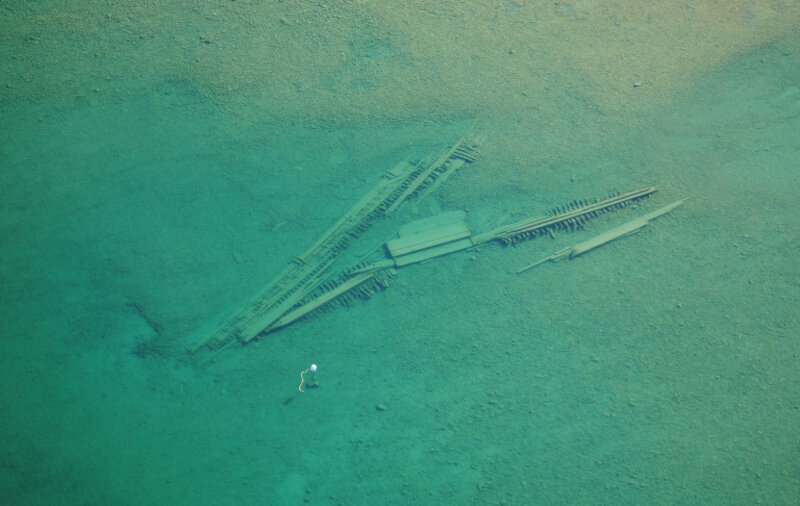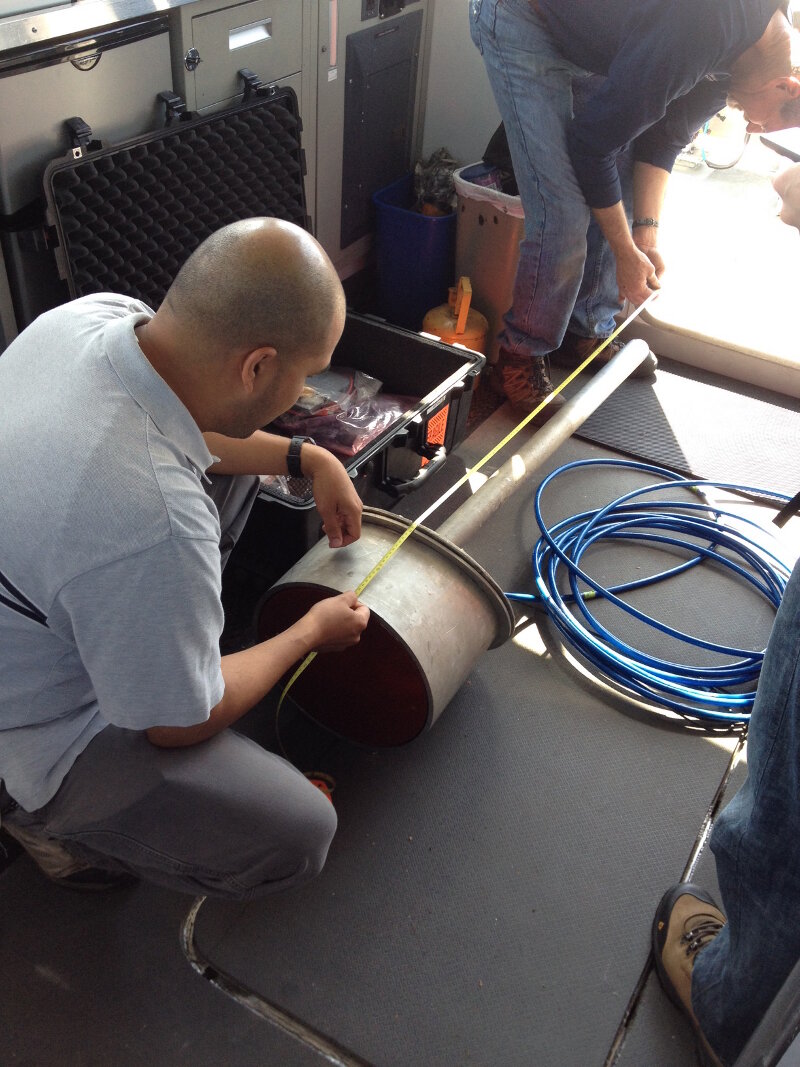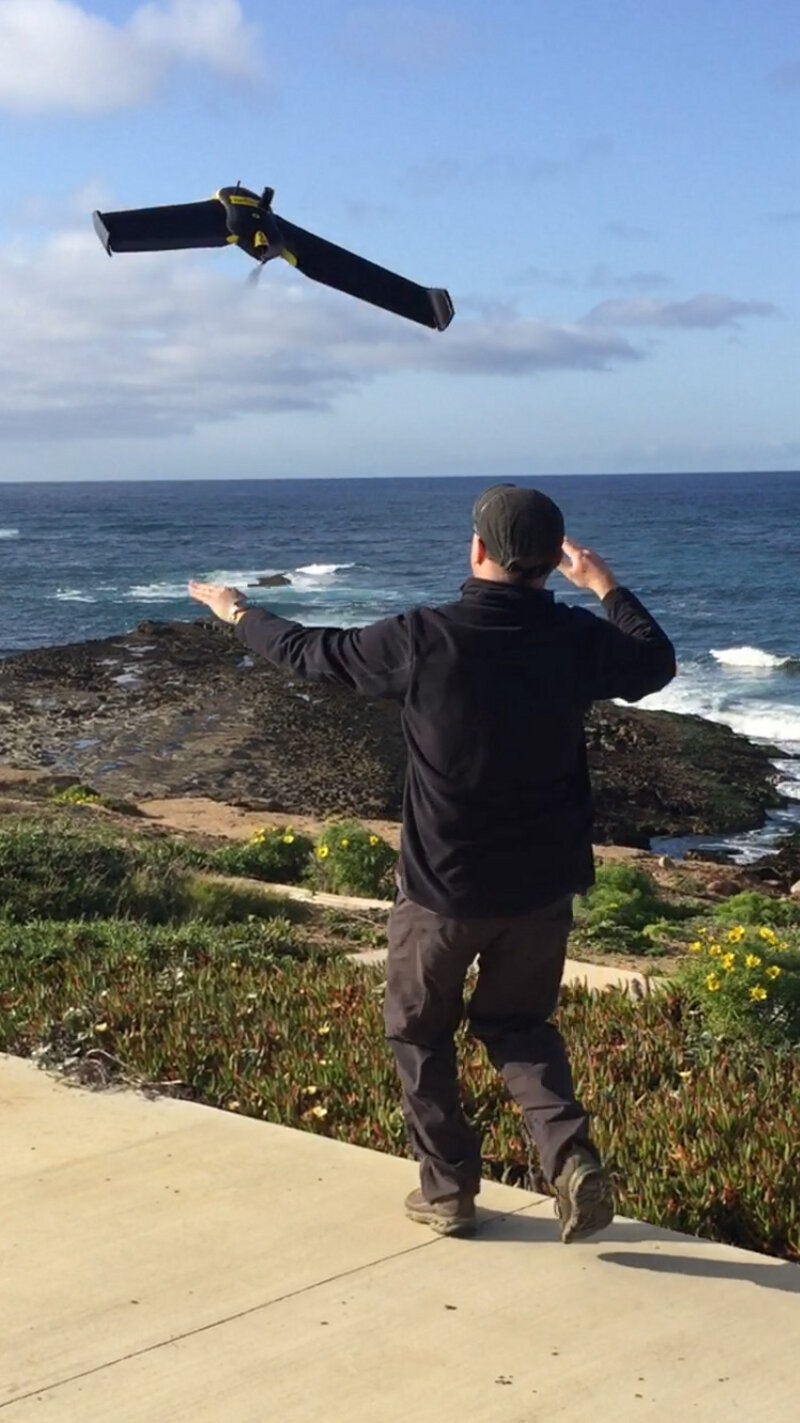
Collaborations with other research teams are an invaluable way for Thunder Bay National Marine Sanctuary to access cutting-edge technology and an array of highly skilled scientists and technicians, while cost-sharing to make these projects more efficient, cost effective, and timely. Involving experts from other fields also allows groups beyond archaeologists to use the data to advance many other fields of study. This study is built entirely on collaborative partnerships, including those highlighted below.

Wooden schooner American Union as seen from above demonstrates the clarity of Lake Huron’s water and the visibility of shipwrecks in shallow water. Image courtesy of Thunder Bay National Marine Sanctuary, NOAA. Download larger version (jpg, 1.9 MB).
Expedition Principal Investigator (PI) Dr. Guy Meadows, Director of the Great Lakes Research Center at Michigan Technological University , brings over 40 years of professional experience in oceanographic and marine research to the project. His substantial knowledge of marine technology and engineering will be invaluable to the effective application of numerous technologies during the project, as well as reporting and characterizing their results. Michigan Tech is also providing and operating the autonomous underwater vehicle (AUV) platform that will be used to collect high-resolution acoustic imagery of potential new shipwreck sites.

NOAA researchers measure offsets for a sonar mount, a critical step for ensuring correct positioning the of sonar information collected on the water. The navigation system, which is located apart from the sonar sensor, must know the distances between the two in order to adjust positions and account for the motion of the sonar sensor as the boat pitches, rolls, and moves through the water. Image courtesy of Thunder Bay National Marine Sanctuary/NOAA. Download larger version (jpg, 1.1 MB).
The University of Delaware, College of Earth, Ocean, and Environment Co-PI, Dr. Athur Trembanis, is leading a team of university researchers to operate a Phase-Measuring Echosounder (PMES) sonar system during the wide-area exploratory search portion of the project.
California-based Oceans Unmanned will bring highly experienced Unmanned Aircraft Systems (UAS) pilots, as well as Co-PIs Matt Pickett and Brian Taggart, into the project to conduct a series of overwater aerial surveys with camera-equipped UAS vehicles. Using a variety of Vertical TakeOff and Landing (VTOL) quadcopter UAS and an array of payloads, they will conduct a series of overwater aerial surveys with shore and vessel-launched platforms. In this unique approach to marine surveys, the pilots will take advantage of the exceptional water clarity across Lake Huron and use the UAS cameras to image the lake floor in shallow water, hunting for historical shipwrecks and other archaeological debris.

Example of fixed-wing UAS system being launched. Image courtesy of the NOAA Remote Sensing Division. Download image (jpg, 172 KB).
NOAA’s Remote Sensing Division (RSD) is providing a fixed-wing senseFly eBee UAS, operators and data processing support to test and evaluate the potential for shore-launched, fixed-wing UAS to locate and image shallow water shipwrecks and other archaeological debris.
NOAA’s Great Lakes Environmental Research Lab will operate a series of small research vessels suited to the various survey tasks required during the mission.
Thunder Bay National Marine Sanctuary, the host of the expedition, will assist with planning, historical research, survey area designation, and data interpretation in all phases. The Friends of Thunder Bay National Marine Sanctuary are handling the administration and coordination of the grant which funded the project.